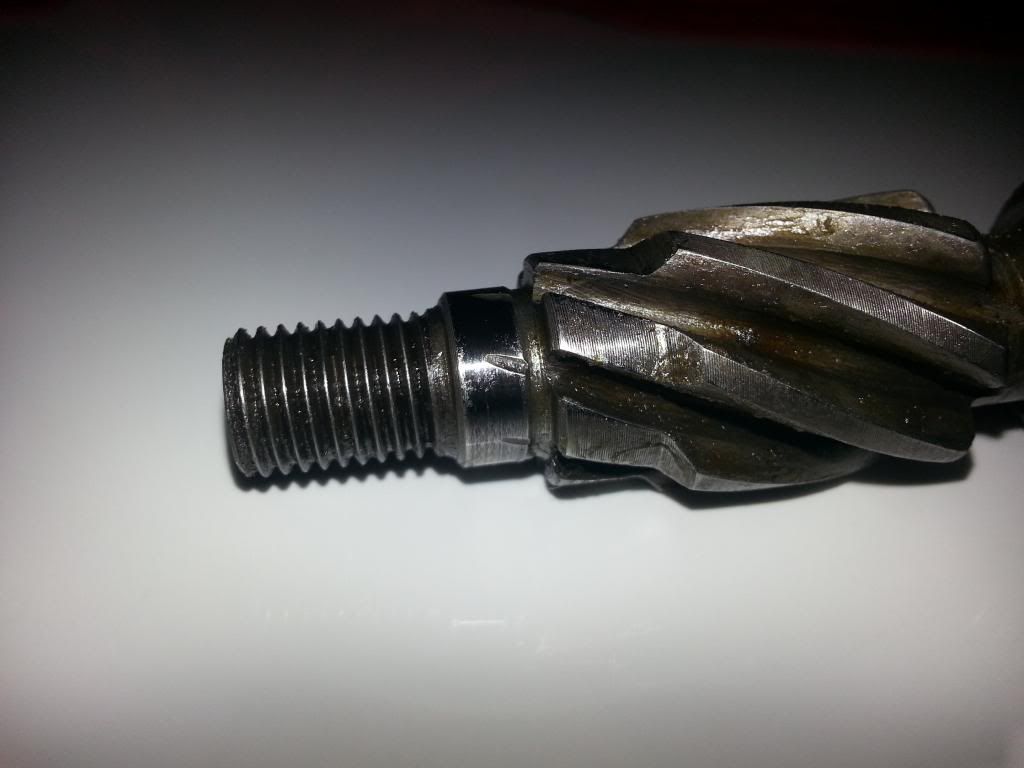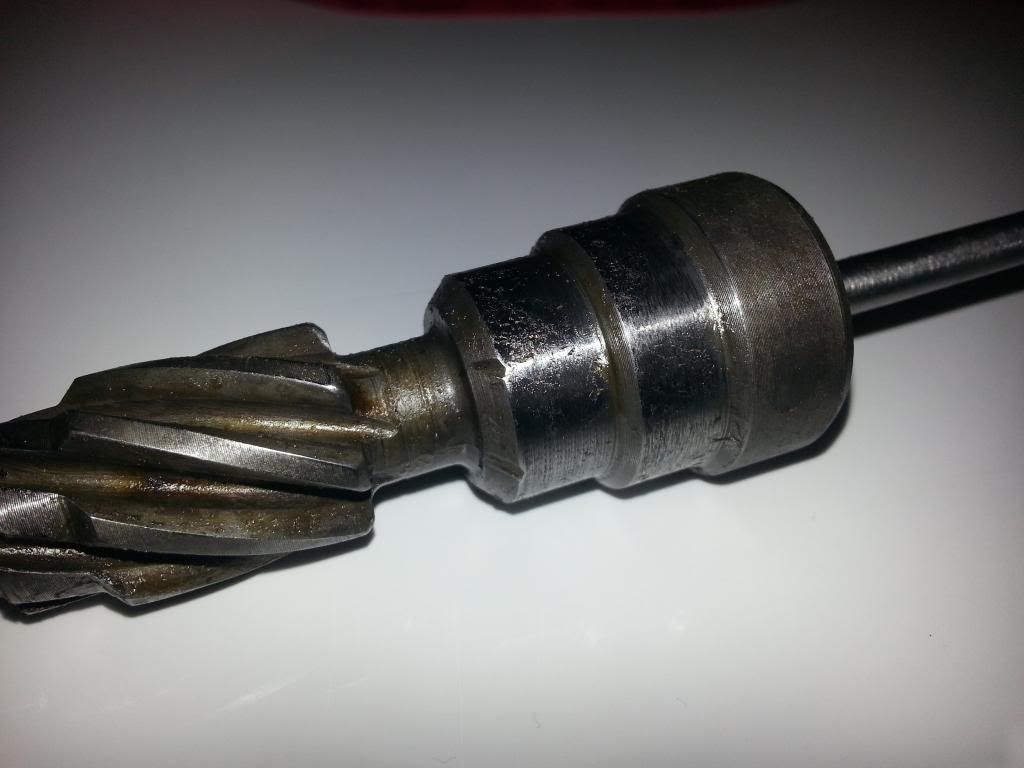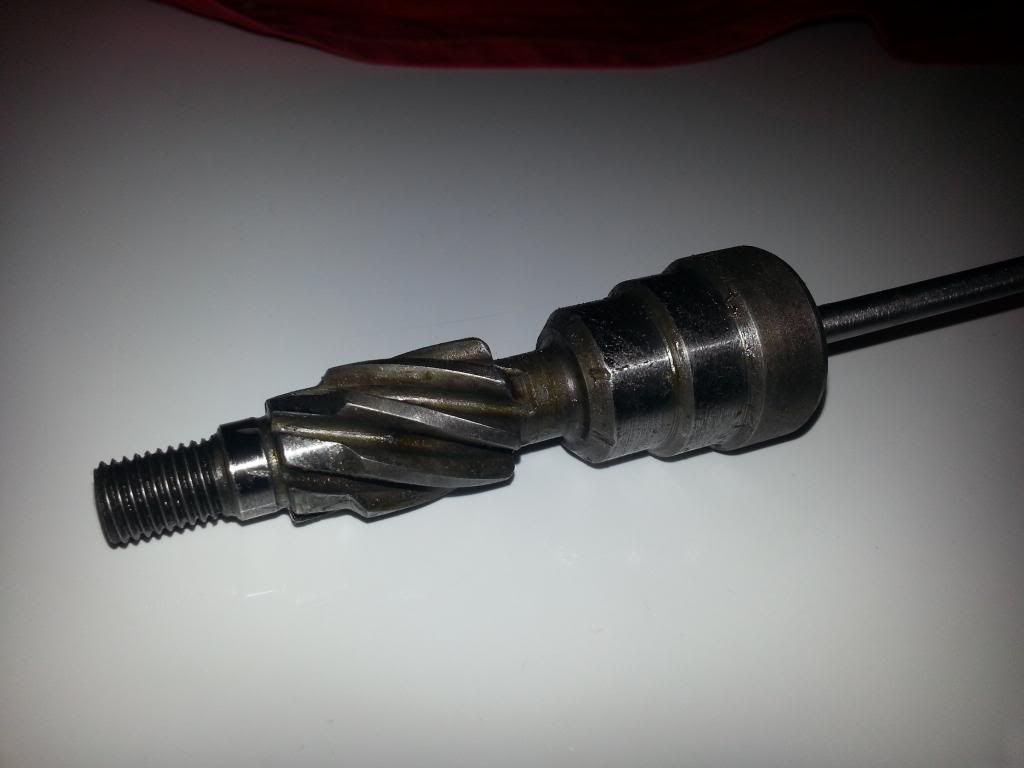MR2 SW20 RHD Power Steering Quick Steer Pinion.
Moderators: IMOC Moderators, IMOC Committee Members
Re: MR2 SW20 RHD Power Steering Quick Steer Pinion.
Please hold back before sending it to Fensport. I need to check that it has been machined correctly.
I need to check that it has been machined correctly. I am waiting on my pinion to arrive.
I am waiting on my pinion to arrive. I would not want you paying twice.
I would not want you paying twice.



-
ziggyzigatron
- Posts: 29
- Joined: Sat Apr 02, 2011 7:58 am
- Location: cambridge
Re: MR2 SW20 RHD Power Steering Quick Steer Pinion.
Fensport are pretty good guys who know there stuff and are only 5 miles from me.
I think there input would be highly valuable.
And I dont think it would hurt for them to have look if there willing.
I think there input would be highly valuable.
And I dont think it would hurt for them to have look if there willing.
Re: MR2 SW20 RHD Power Steering Quick Steer Pinion.
Yes that would be a good idea for a visual inspection. I have used them a few times.
I have used them a few times. I thought you meant that you was just going to shove it in regardless.
I thought you meant that you was just going to shove it in regardless.
-
ziggyzigatron
- Posts: 29
- Joined: Sat Apr 02, 2011 7:58 am
- Location: cambridge
Re: MR2 SW20 RHD Power Steering Quick Steer Pinion.
I will ring them tomorrow and see what there plans are for saturday.
I will post my findings here and would appreciate the input of any others.
I will post my findings here and would appreciate the input of any others.
-
ziggyzigatron
- Posts: 29
- Joined: Sat Apr 02, 2011 7:58 am
- Location: cambridge
Re: MR2 SW20 RHD Power Steering Quick Steer Pinion.
Not expecting any thing too quick as I know there very busy
Re: MR2 SW20 RHD Power Steering Quick Steer Pinion.
Thanks that would be helpful.
-
ziggyzigatron
- Posts: 29
- Joined: Sat Apr 02, 2011 7:58 am
- Location: cambridge
Re: MR2 SW20 RHD Power Steering Quick Steer Pinion.
I spoke to Tim at Fensport and I need to pop in on a weekday as the guy I spoke to last time does not work saturdays so I will keep you posted.
Just got my pinion but I have not seen the old one so it is not clear what I am looking at.
Do we know what grade of steel this made of as the reproduction cost and effort is huge compared to an ebay rack if it wears out.
Just got my pinion but I have not seen the old one so it is not clear what I am looking at.
Do we know what grade of steel this made of as the reproduction cost and effort is huge compared to an ebay rack if it wears out.
-
ziggyzigatron
- Posts: 29
- Joined: Sat Apr 02, 2011 7:58 am
- Location: cambridge
Re: MR2 SW20 RHD Power Steering Quick Steer Pinion.
Anyone fitted it yet  ?
?
Re: MR2 SW20 RHD Power Steering Quick Steer Pinion.
ziggyzigatron wrote:Anyone fitted it yet?
Yourself and Wingers are the only people that have received the parts.
Re: MR2 SW20 RHD Power Steering Quick Steer Pinion.
ziggyzigatron wrote:
Do we know what grade of steel this made of
Also anything about any hardening treatment?
Re: MR2 SW20 RHD Power Steering Quick Steer Pinion.
5sgte wrote:ziggyzigatron wrote:
Do we know what grade of steel this made of
Also anything about any hardening treatment?
You asked for that information on the mr2australia.com site.
Here it is again:
Applications In the carburized condition this alloy is used for gears, ring gears, shafts and crankshafts.
Machinability Machining is done prior to carburizing to within as close a tolerance as possible.
Forming Forming characteristics of 8620 alloy are good in the annealed condition.
Welding The alloy may be welded by conventional methods, usually gas or arc welding.
Heat Treatment This alloy may be hardened by heating to 1500 F followed by a water quench.
Forging The alloy may be forged at 2200 F down to 1800 F prior to the hardening heat treatment or carburizing.
Hot Working Hot working may be accomplished prior to hardening or carburizing.
Cold Working The alloy may be cold worked in the annealed condition by conventional methods.
Annealing AISI 8620 may be given a full anneal at 1550 F and slow cooling at not more than 50 F per hour down to 850 F.
Aging Not applicable to this alloy.
Tempering Tempering of carburized parts is done at 250 to 300 F and this will result in the alloy having a core strength of approximately 135 ksi minimum with Rockwell C case hardness of 90.
Hardening Hardening is done by oil quench from 1675 F.
Other Comments This alloy is typically used for carburized parts where a hardened case is desired for wear resistance.
Physical Data
Density
Re: MR2 SW20 RHD Power Steering Quick Steer Pinion.
Probably did sorry, I've looked at about a million things since then.
 Thanks for posting it again.
Thanks for posting it again.

Anybody who has theirs got any photos to share?
Anybody who has theirs got any photos to share?
Re: MR2 SW20 RHD Power Steering Quick Steer Pinion.
I've got mine so will post some pictures to  (hopefully) settle some nerves out there.
(hopefully) settle some nerves out there.













I've not fitted it yet as I wanted to confirm that the diameters which have machining marks on them are ok and not sealing faces. I've also been to Toyota and bought a kit of spare parts
I've also been to Toyota and bought a kit of spare parts  (which I have a list of) so I'll post the list once I've fitted it and am happy that it's everything you need.
(which I have a list of) so I'll post the list once I've fitted it and am happy that it's everything you need.

Wingers



I've not fitted it yet as I wanted to confirm that the diameters which have machining marks on them are ok and not sealing faces.
Wingers
Re: MR2 SW20 RHD Power Steering Quick Steer Pinion.
I have just come off the phone. I expressed my concern that the little
I expressed my concern that the little  'nick' from the helical should not be between the thread at the end and the the helical part.
'nick' from the helical should not be between the thread at the end and the the helical part. They will get back to me.
They will get back to me.


Re: MR2 SW20 RHD Power Steering Quick Steer Pinion.
Wingers, I have sent you a pm.
Re: MR2 SW20 RHD Power Steering Quick Steer Pinion.
Wingers do not install the pinion part.
Re: MR2 SW20 RHD Power Steering Quick Steer Pinion.
For those who are wondering what's happening with Wingers, he was sent the wrong part. They sent him a
They sent him a  'setting piece'.
'setting piece'. He will be sent another part once he returns the part he currently has in his possession.
He will be sent another part once he returns the part he currently has in his possession.

The manufacturer has checked all the other parts that have so far been produced and have assured me that they are OK.
The manufacturer has checked all the other parts that have so far been produced and have assured me that they are OK.
Re: MR2 SW20 RHD Power Steering Quick Steer Pinion.
Marty J wrote:ziggyzigatron wrote:Anyone fitted it yet?
Yourself and Wingers are the only people that have received the parts.Dantheman should be receiving his upgraded pinion soon.
I am still waiting on mine.
Should I have received mine yet, still not got it at the address I emailed you
Re: MR2 SW20 RHD Power Steering Quick Steer Pinion.
dantheman wrote:Marty J wrote:ziggyzigatron wrote:Anyone fitted it yet?
Yourself and Wingers are the only people that have received the parts.Dantheman should be receiving his upgraded pinion soon.
I am still waiting on mine.
Should I have received mine yet, still not got it at the address I emailed you
Sorry Dan, I wanted to make sure the other parts are manufactured correctly before yours is sent to you.
Re: MR2 SW20 RHD Power Steering Quick Steer Pinion.
dantheman wrote:Marty J wrote:ziggyzigatron wrote:Anyone fitted it yet?
Yourself and Wingers are the only people that have received the parts.Dantheman should be receiving his upgraded pinion soon.
I am still waiting on mine.
Should I have received mine yet, still not got it at the address I emailed you
Dan I have just been told that your upgraded pinion was sent out today by courier.